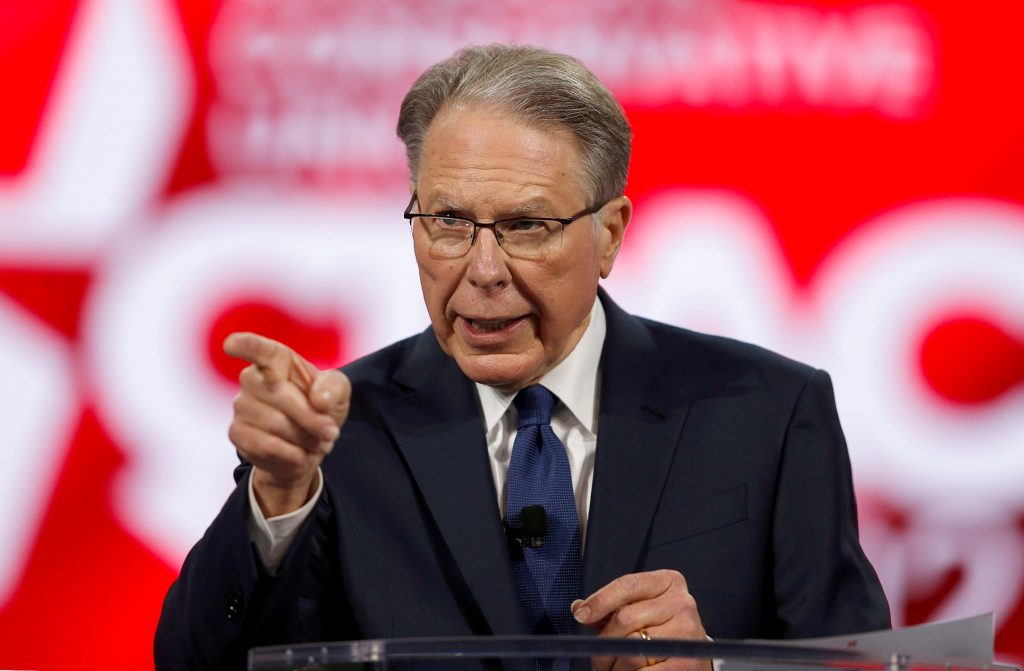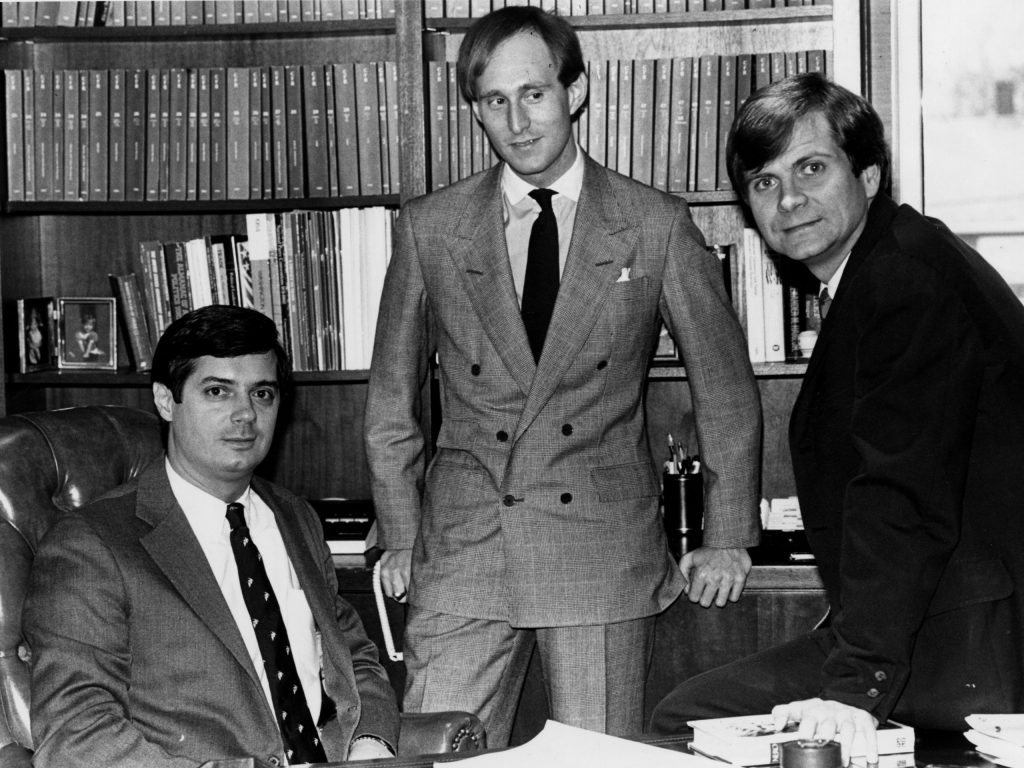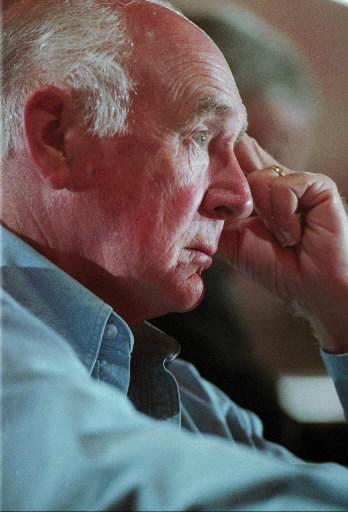In May 1995, former president George H. W. Bush declared he was done with the National Rifle Association (NRA). In a terse letter written in the wake of the domestic terror bombing of the Alfred P. Murrah Federal Building in Oklahoma City, Bush resigned his life membership in the NRA.
Wayne LaPierre, the nation’s number one loudmouth apologist for guns in all their forms, had finally, at least in the eyes of the former president, gone too far. It ticked off Bush that LaPierre, the NRA’s top executive, had called federal agents – including some like those killed in the Oklahoma bombing – “jack-booted thugs,” no better than Nazis in their attacks “on law abiding citizens.”
Bush’s resignation made headlines across the country, and as a gesture of opposition to the gun lobby it had, at least, some fleeting impact. What went less noticed was the former president’s focus on the NRA’s lies. LaPierre’s baseless charges, Bush said, “deeply offends my own sense of decency and honor.” He called it “slander.”
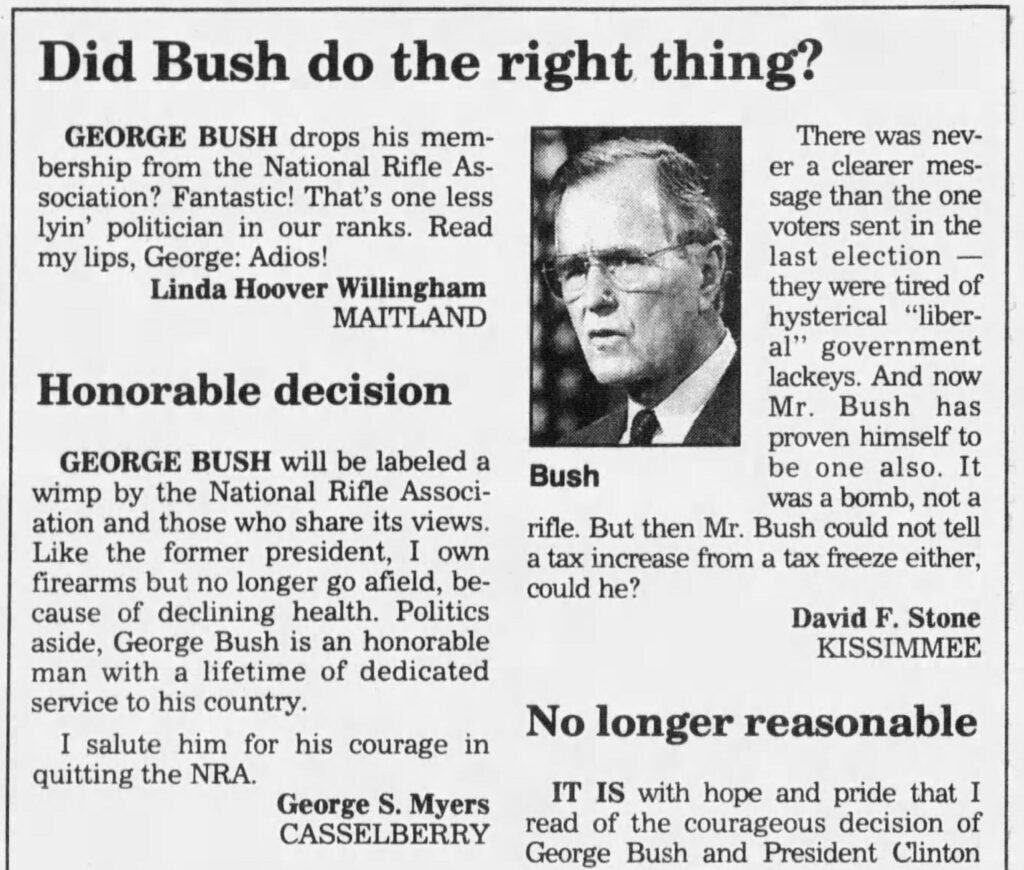
Nearly thirty years later here we are drowning in lies about guns, about the Second Amendment, about our unending political inability to stop the carnage that blows away ten-year-old kids and their teachers.
America’s fixation with guns, and the conservative rightwing embrace of a culture that celebrates guns over the lives of little Americans, exists only because of the lies.
The Catholic bishop of Brownsville, Texas, near the most recent gun outrage in Uvalde, has spoken eloquently – and truthfully – about the “sacralization” of gun ownership, as though owning a weapon like that used to murder children last week is some God given right.
“We have kind of sacralized the whole idea of the individual right,” Bishop Daniel Flores said last week, “such that it trumps any communal concern. It becomes an untouchable aspect in the discourse, that the common concern for the good of the vulnerable is not in any way sufficient to limit the individual right to determine whether or not I want to own this kind of a gun, or that kind of gun, or, you know, a hand grenade for that matter.”
Here’s some truth: God didn’t create a right to own an AR-15. Rather it was the United States Supreme Court – and, of course, the NRA – that has, over time, created the myth that the authors of the Bill of Rights intended for Americans to “keep and bear arms” in every conceivable circumstance. The inventors of the Second Amendment could not have in their worst dreams imagined what transpired at the Robb Elementary School in Uvalde, Texas.
James Madison’s idea of a gun was a one-shot musket that took thirty seconds to reload.
More truth: more guns don’t make us safer. That is simply a nonsensical argument invented to deflect from the reality that death by guns is really the ultimate measure of American exceptionalism. The Gun Violence Archive tracks these morbid statistics and has documented 18,000-gun deaths in the United States already this year – 8,000 murders and the rest suicides. There have been more than 230 mass shootings, defined as gun incidents involving at least three people.
Good lord, America, there have been at least 18 mass shootings since Uvalde.
The NRA, as Poppy Bush came to realize, is only able to exist, and the gun culture is only able to thrive, if the lies flow like a mountain stream in the spring.
Good guys with guns don’t protect people from bad guys with guns. The tragedy in Texas should put the lie to that lie once and for all. The reprehensible Ted Cruz, Republican apologist for the mass murder of children in his state, has been bloviating about “hardening” schools, as if a place of learning and social interaction was some military target to be protected by surface-to-shooter missiles.
Cruz’s answer to the outrage in his state is to only have one entrance to a school building. This man is an actual United States senator. For Cruz to tolerate gun violence on such a massive scale requires that he lie about solutions that are laughably insincere and ridiculously unworkable.
Certainly, we need more state and national resources devoted to mental health, but you’ll go crazy waiting for serious movement on this talking point from the NRA and it’s wholly owned subsidiary, the Republican Party. Show us the money. Detail the programs. Then you’ll demonstrate some seriousness of purpose. Otherwise, it’s just spin.
One of the biggest lies is the claim that there are so many guns in this country that there is nothing that can be done to begin to lessen the death and injury caused by those guns. It’s a lie.
First move: stopping selling weapons of mass killing, battlefield like guns of the type used in Texas massacre, to immature 18-year-old boys. We don’t let them drink at that age or buy cigarettes. They can’t rent a car and auto insurance companies charge a premium to cover them. But these kids can buy a semi-automatic weapon and thousands of rounds of ammunition.
As political scientist Brian Rosenwald noted recently there is ample evidence that increasing the purchase age will have a significant impact. “There is one glaring connection between the Uvalde massacre and the racist shooting of 10 at a Buffalo supermarket on May 14,” Rosenwald wrote in the New York Post. “Both shooters were 18-year-old men. And this isn’t unusual. The shooter who killed 17 at a Florida high school in 2018? A 19-year-old man. The killer who ended nine lives in a Charleston, South Carolina church in 2015? A 21-year-old man. And it was a 20-year-old man who took 26 lives at Sandy Hook Elementary School in Connecticut in 2012, only months after a 24-year-old man killed 12 and wounded 58 in Aurora, Colorado.”
To change this age limit is a no-brainer. Doing nothing – again – is insanity.
By overwhelming margins Americans, including many gun owners, favor higher age limits, better background checks, limits on high-capacity magazines and, yes, bans on assault rifles. If you take the position, or support a politician who takes a position, that there is nothing to be done to try and prevent the next school, or supermarket, or church shooting you are effectively aiding and abetting the next slaughter.
In the wake of George H.W. Bush’s truth telling about the gun lobby in 1995, columnist Dan Thomasson wrote this: “The NRA has succeeded in convincing huge numbers of Americans that their Second Amendment rights are in peril if there is any control of any kind of weapon, even those designed only for war and totally out of place in an urban society. No larger perversion of the truth exists and the NRA knows it.”
Keep accepting the lies and the murder of innocent kids in classrooms will surely continue. Reject the lying and we have a chance, and only that, to step back from the hellscape that so many guns have brought to America.
—–0—–
Additional Reading:
A few other reads you may find of interest …
What Bullets Do to Bodies
A Huff Post profile of Dr. Amy Goldberg, the chair of the surgery department at Temple University Hospital in Philadelphia. As you can imagine she has treated many, many gunshot victims.

“In her first or second year of residency at Temple, when she was in her mid-20s, she helped treat a young boy who had been shot in the chest by his sibling who picked up a loaded gun that was lying around. The doctors couldn’t save him. The senselessness made her so angry. Goldberg listened as a senior resident informed the boy’s mother. ‘I’m sorry,’ the resident said, ‘he has passed.’ The mother didn’t react; she didn’t seem to understand what she had just heard. Goldberg spoke up. ‘He died. We’re so sorry. He died.’ It was a lesson: Be direct. ‘You have to find a very compassionate way of being honest,’ she said.”
The story by Jason Fagone is from 2017, but it is just as current, unfortunately, as this morning’s headlines.
Nazi or KGB agent? My search for my grandfather’s hidden past
“Every family has its ghosts. Ancestors who disappeared by their own hand, or by the hands of others; relatives who never fully revealed themselves while they lived. In the lands that we call eastern Europe – from Estonia in the north to Ukraine in the south – these ghosts are especially common. These are the “bloodlands” of Europe, as the historian Timothy Snyder calls them – territories that spent the past few centuries passing from one occupying power to another, where cemeteries and mass graves dot the land.
“Here, my grandfather’s story of collaboration and disappearance is unusual, but it is not unheard of.”
Fascinating story from The Guardian.
Building the “Big Lie”: Inside the Creation of Trump’s Stolen Election Myth
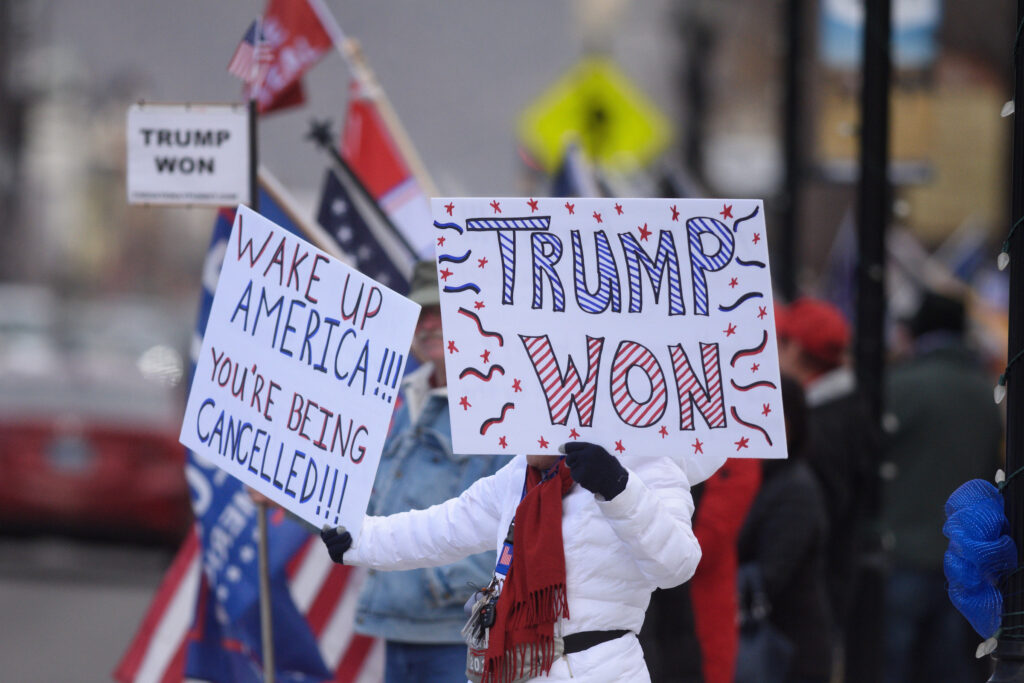
(David Calvert/The Nevada Independent)
“ProPublica has obtained a trove of internal emails and other documentation that, taken together, tell the inside story of a group of people who propagated a number of the most pervasive theories about how the election was stolen, especially that voting machines were to blame, and helped move them from the far-right fringe to the center of the Republican Party.”
If you don’t believe that our democracy is in danger you simply haven’t been paying attention. ProPublica has the receipts.
The mysterious, mercurial world of baseball fandom
“When you’re a kid, a year is an eternity—especially when it gives you extra time to wallow in your team’s crushing defeat the season prior. Baseball came back in April of 1995, but by then I had started to drift away from the Phillies. I still liked baseball, and I still watched it quite a bit, I just took more of a bird’s-eye view. I wished Cal Ripken Jr. well that September, when he broke Lou Gehrig’s seemingly untouchable record of 2,130 consecutive games played. In summer 1998, I got as caught up in the Mark McGwire/Sammy Sosa home-run race as anybody. But over that strike year my heart had hardened and I wasn’t sure I would ever open it up so completely to a specific team again. The cost was too great.”
I’m kind of obsessed with baseball these days. It’s good therapy and this story is good.
Thanks for reading. Share these posts if you are inclined and please do stay in touch.

